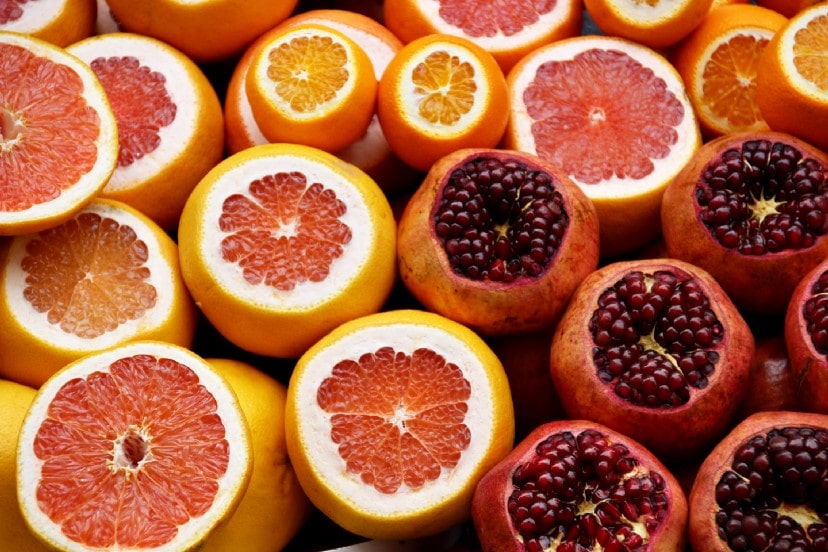
Let’s start by ignoring the fact that grapefruits and pomegranates aren’t even on the list. Overall, I really liked the picture, but feel free to add these fruits to your list anyway, they’re also incredibly healthy!
I guess eating 15 different foods every day seems like a lot to handle. In fact, and especially if you’re not used to eating this way, it is.
The idea with lists like these is not to achieve perfection or even strive for it. Instead, look to this article and the science below for inspiration to incorporate more of these foods into your daily life.
If you can cut out 5 foods one day and another 5 the next, you’re on your way to success! Please note that this list is only a suggestion and ought to be adapted to your needs and personal preferences.
Red/Dark Berries (blueberries, blackberries, acai, goji, cherries, strawberries, raspberries)
In what is now the largest conclusive analysis of risk factors for death and disease in history, 500 researchers in 50 different countries developed the 2010 Global Burden of Disease Study.
They found that the leading cause of death, disability, and disease in the United States Says it was diet.
What makes berries so special? Well, in a nutshell: it’s your color! As the fruit category with the highest levels of antioxidant properties, berries are second only to spices when it comes to providing a nutritional punch.
In fact, an American Cancer Society study of nearly 100,000 men and women found that those who ate the most fruit seemed significantly less likely to die of cardiovascular disease.
Beans (soybeans /edamame, black beans, kidney beans, lentils, split peas, chickpeas)
Research on the diet of individuals from populations around the world has provided significant evidence for beans (also known as legumes) as one of the “most important predictors of survival in the elderly”.
Nuts (almonds, walnuts, pecans, pecans, pistachios, Brazil nuts, cashews, hazelnuts, macadamia nuts)
Eating a handful of walnuts every day is not only associated with a greatly reduced risk of chronic diseases like heart disease and diabetes but walnuts have also been shown to lower oxidation and blood sugar levels in the body, as well as LDL. (bad) cholesterol, thereby improving arterial function.
READ RELATED: Onam 2022: Is Avial Good For Weight Loss?
Flaxseed (milled flaxseed)
An incredible 2013 study found that ground flaxseed provided one of the strongest antihypertensive effects ever achieved by a single food.
The results found that just a few tablespoons of the substance (added to a smoothie or incorporated into baked goods, perhaps) caused a beneficial reduction in blood pressure and stroke risk 2 to 3 times stronger than the daily introduction of aerobic endurance exercise.
Other Seeds (chia seeds, hemp seeds, pumpkin seeds, sesame seeds, fennel seeds)
The seeds are excellent sources of fiber and omega-3 fats and are small enough to add to most dishes without drawing too much attention to themselves.
Chia seeds, in particular, moderate blood sugar levels when consumed with or immediately after a meal, as well as reduce levels of inflammatory chemicals in the blood. Overall an excellent addition to your daily diet.
Dates
Interestingly, dates are one of the most sugary foods on the planet, with an incredible 80% sugar by weight. To put that into perspective, the cake’s pure frosting is only 60% pure, maple syrup is only 66% pure, and a handful of cotton candy-flavored jelly beans only make it 70%.
Despite their high sugar content, dates have a surprisingly low glycemic index, meaning they don’t have a dramatic effect on blood sugar levels and have been found to improve triglyceride levels and antioxidant stress.
Whole Grains (barley, brown rice, quinoa, oats, millet, popcorn, whole-wheat pasta, wild rice)
Arguably, daily servings of whole grains are not only one of the healthiest ways to consume carbohydrates throughout the day, but they also offer a host of benefits that help grow and maintain our healthy gut flora.
This occurs when fiber breaks down in the colon and starts a kind of chain reaction, which not only releases a host of beneficial substances into the bloodstream but also leads to positive side effects, such as a lower risk of type 2 diabetes and inflammation.
Source: crfatsides









